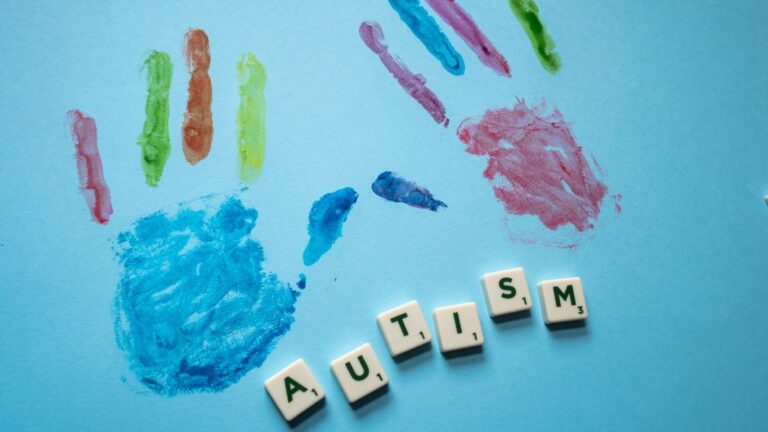The autism diagnostic framework currently employed by medical professionals to diagnose autism spectrum disorder (ASD) has changed drastically over the last few decades. In the past, there were a few terms to describe the wide range of symptoms and behaviors associated with ASD. Before that, families and individuals on the spectrum had few diagnostic options, and many went undetected, never receiving the support necessary for enhanced development.
Over the decades, it has been typical to dismiss neurodivergent individuals as the “odd” kids in class who seemingly socialized more awkwardly or were reserved. In more severe cases, individuals with intense degrees of impairment were limited to institutions or harsh, ineffective treatments. Patients were sometimes separated from their families and completely isolated from society.
However, as research advanced in this area, more specific terms began to appear in the Diagnostic and Statistical Manual of Mental Disorders, also known as the DSM, which was later updated and continually revised. The evolution of the current ASD framework has a complicated history and leaves many with mixed feelings.
While the new autism diagnostic framework helps many obtain a diagnosis and essential services like ABA therapy, it also presents specific, new challenges. The “spectrum” nature of ASD, in context to the new framework, can make diagnosing and categorizing individuals suitably challenging.
The term autism spectrum disorder now represents a wide variety of symptoms, whereas before, there was a distinction between disorders. As a result, many feel providers and researchers overlook the needs of those with profound autism. This blog will explore the current autism diagnostic framework, how it can improve, and why, for some, it’s problematic. Additionally, we will highlight ways ABA therapy can support families touched by neurodiversity.
For more information about autism care with ABA Centers of Florida, click here.
What Is the Current Autism Diagnostic Framework?
The autism diagnostic framework currently used to diagnose ASD involves specific criteria presented by the DSM-5-TR. Using this diagnostic tool, among others like scales and interviews, qualified providers determine if the patient meets the requirements for an ASD diagnosis.
The patient must demonstrate constant social interaction and communication challenges. Additionally, individuals must show two of four repetitive or restricted behaviors. In most cases, these behaviors and patterns impede daily functioning.
How Did the Autism Diagnostic Framework Change When the DSM Was Updated?
In 2013 DSM was updated. The criteria shifted from focusing on deficits and impairments to a more encompassing view considering the individual’s strengths and functional abilities. The new standards also recognize the variability in behavior. This range includes communication deficits, social difficulties, and the typical restricted or repetitive behaviors demonstrated in many with ASD. While these changes provide clinicians and researchers with more diagnostic criteria, they have also created unintended consequences.
What Diagnoses Were Umbrellaed Under the DSM Update?
The DSM update included several diagnoses under the ASD diagnosis. These include:
- Autism Disorder
- Childhood Disintegrative Disorder
- Pervasive Developmental Disorder- Not Otherwise Specified (PDD-NOS)
- Asperger’s Syndrome
- Rett Syndrome
What is Profound Autism?
When describing the most severe level of autism, many experts, clinicians, and advocates now use the term profound autism. Having profound autism means the individual has an IQ below 50 or is severely verbally limited or nonspeaking. Many individuals with profound autism require around-the-clock care due to increased challenging behaviors like aggression and self-injury. Additionally, many also have epilepsy. Their needs require support to stay safe across their lifespan.
Why Is the New Framework Problematic in Some Cases?
Although we now recognize the spectrum in neurodiversity, the new criteria sometimes pose problems. For some, the recent autism diagnostic framework creates an environment that often neglects individuals with profound autism. These individuals often lack verbal communication or exhibit complicated, dangerous behaviors that require specialized care. Meaning they face critical challenges that we must address.
Many feel the new spectrum label leaves “profound” individuals out of the conversation, figurately and literally. Many people with profound autism cannot communicate and, therefore, don’t meet the criteria for DSM-5 ASD subcategories. As a result, some on the spectrum with severe deficits are excluded from receiving the proper diagnosis and cannot access timely services.
Moreover, the new framework may lead to inaccurate diagnoses. Discrepancies may occur as the criteria used to diagnose ASD may not accurately reflect the individual’s experiences.
As such, many autism experts believe it is essential to reexamine the autism diagnostic framework. This review will ensure more accuracy and distinction in the diagnostic process so patients can receive appropriate care.
What Benefits Does the DSM-5 Update Offer?
While the new autism diagnostic framework has caused some concern, there have also been some positive outcomes. For example, the criteria for receiving an ASD diagnosis have become more inclusive. This inclusivity allows individuals previously excluded from receiving a diagnosis to qualify and access services that can improve their life. The new framework also offers clinicians and researchers greater insight into the various facets of autism, allowing for more tailored treatments.
Improving the Autism Diagnostic Framework
It is essential to recognize the variation among individuals with autism to improve the current diagnostic framework. Additionally, it’s vital to consider the unique degree of care needed by those with profound autism.
One suggestion autism advocates propose is offering more comprehensive and individualized assessments to each person exhibiting symptoms rather than relying on DSM criteria. This personalization would allow clinicians to understand individuals better and create a plan tailored to their circumstances.
Furthermore, many believe the autism diagnostic framework should emphasize the importance of early intervention and evidence-based treatment options, like ABA therapy.
ABA Therapy and Autism’s Diagnostic Framework
Research has shown that Applied Behavior Analysis, also called ABA therapy, is an effective intervention for individuals with autism. ABA treatment focuses on positive reinforcement and breaking down tasks into smaller parts to teach new skills and behaviors. Over time clients improve communication, social skills, and self-regulation.
Additionally, ABA therapy has been established for decades and supports individuals of varying degrees of autism at any age. Many families and communities benefit from this supportive, behavior-based approach to ASD symptom management.
Autism Research and Next Steps
Scans show scientists that brains can look similar, yet individuals express unique qualities and features. To truly personalize autism care, which we know is critical when serving neurodivergent individuals, we must recognize the diversity in cases and clusters. By better understanding the personalized experiences of those with ASD, whose perspectives vary tremendously, we can support each person optimally.
Additionally, research demonstrates variability with cases of different conditions looking more alike than two autism cases. Providers must recognize no universal approach to autism will be beneficial. Now, we must focus on learning what’s meaningful to each person and redefine how we “think” about autism in context to the individual. Autism research and diagnostic framework can improve with further collaborations and a focus on the preferences and needs of each diagnostic case.
Improving Our Understand of Autism Every Day
In conclusion, the current autism diagnostic framework has progressed, allowing for more assessments and providing better access to services. However, it is vital to recognize there is still room for improvement. By considering the needs of all individuals with autism and identifying the uniqueness of every case, clinicians can provide better care. This personalization ensures everyone on the autism spectrum receives the proper diagnosis and help!
More about ABA Centers of Florida!
ABA Centers of Florida understands that the ASD diagnostic process can be complex and overwhelming for families. We provide a supportive, safe environment where your child can obtain the diagnosis that gets them the care they deserve for a new chapter of their life!
We provide high-quality developmental care to neurodivergent children and teenagers. Our team of experienced, certified ABA practitioners, including Board Certified Behavior Analysts (BCBAs) and Registered Behavior Technicians (RBTs), commit to helping your child make meaningful connections and learn incredible new skills.
At ABA Centers of Florida, we understand that each child touched by ASD is different and deserves a tailored approach. We create personalized treatment plans based on research and ongoing assessments to ensure the best for your child in every ABA session.
If you or someone close has or may have autism spectrum disorder, please get in touch with us at (772) 773-1975 for more information about ABA therapy or click here.








